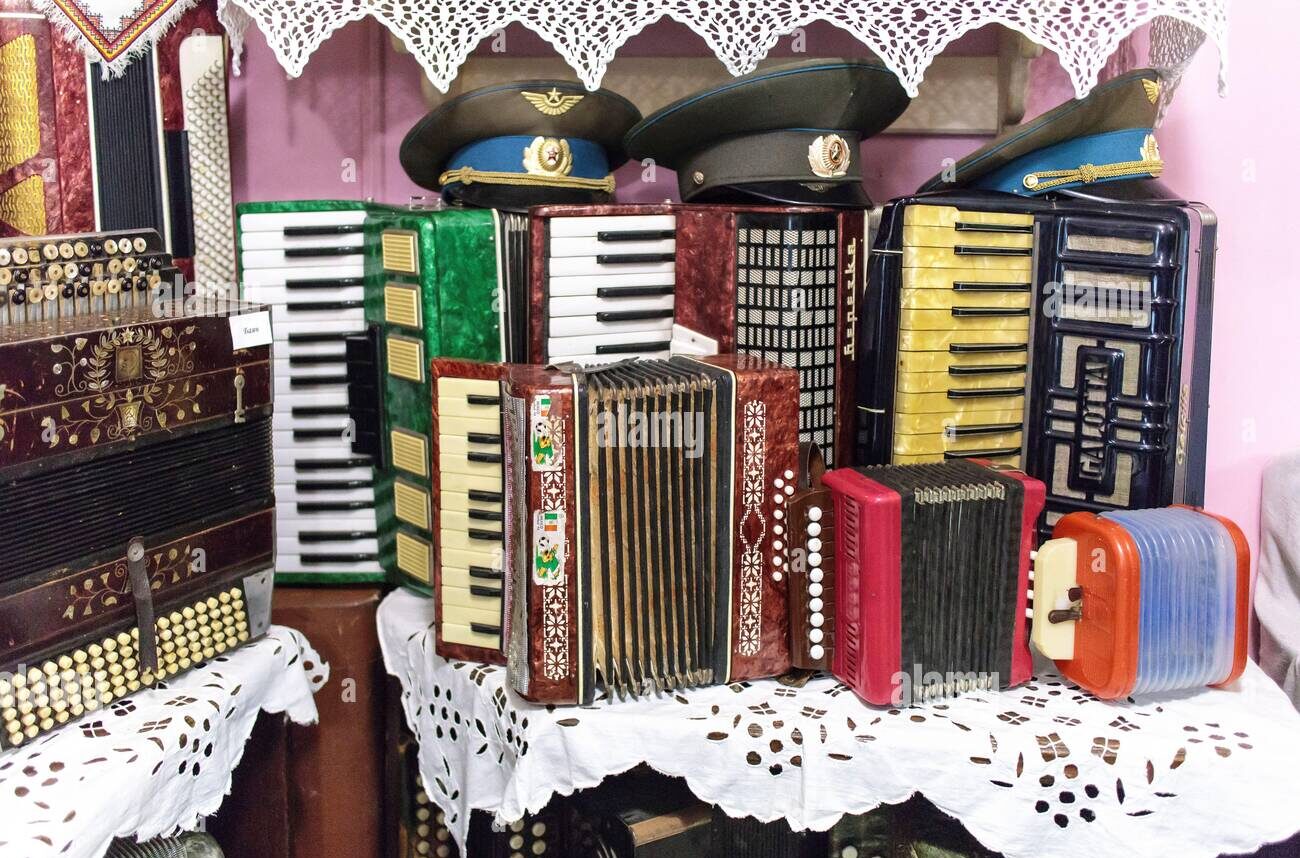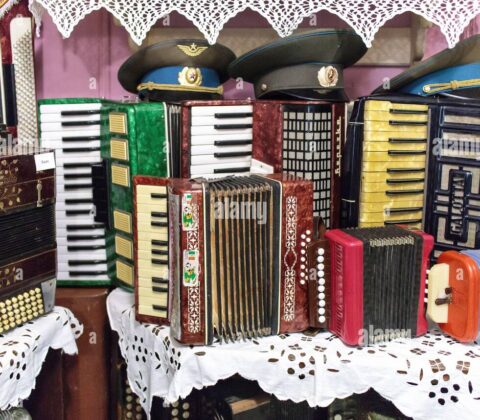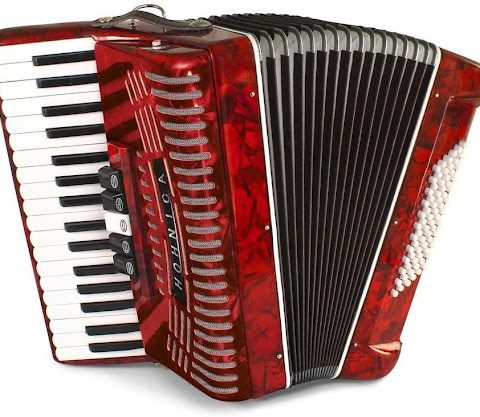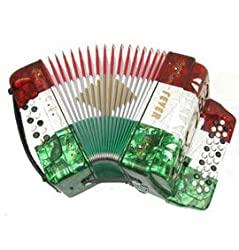Posts Tagged: Button Accordion


Button Accordion Tips for Beginners
Those wanting to learn the button accordion should familiarize themselves with certain tips to make the most out of their practice sessions. These will enable them to get the most from their learning experience.
Step one is selecting an instrument with enough keys for your level of skill and expertise, and finding an accordion instructor who can offer more specialized help.
1. Don’t Forget the Bass Buttons
One of the key aspects of learning accordion for novice players is remembering to press down on all five bass buttons at once. This is particularly essential when starting out on this instrument for the first time.
Most accordions utilize what is commonly referred to as the Stradella bass system or standard bass (sometimes abbreviated to “Stradella bass”) which uses columns of buttons arranged in a circle of fifths on the left side of their instrument.
In this layout, the central C button is marked with a bump for easy identification by touch. Just above it are an F and Bb keys; further along comes an M.
As well as these bass buttons, accordions also feature so-called chord buttons constructed on the same root note of their bass row notes, creating major and minor triads, dominant seventh chords (minus their fifth note) and fully diminished 7th chords.
2. Pay Attention to Your Finger Position
One of the key aspects of button accordion playing is being aware of your finger position. Failing to position them correctly could prove costly when it comes to playing bass buttons effectively and creating the best possible sound.
Not to forget is that the layout of the bass buttons on your accordion also plays an integral part in whether or not they will be easy for you to play, with some models featuring stepped bass button boards which make thumb placement simpler.
However, this can be uncomfortable as your thumb becomes constrained by the bass strap and may result in poor posture.
To avoid this scenario, it is wise to begin your accordion playing journey on the inside row of its bass board – this will give your hands a better idea of where they should go when playing on both the inner and outer button boards of an accordion bass board.
3. Practice Makes Perfect
Many have heard the saying that, “practice makes perfect.” It can serve as an encouragement for individuals to put in effort in something and strive to do their best.
As part of learning an accordion, it is crucial to familiarize yourself with all the different buttons on the instrument. Each button can help produce various sounds and create melodies of its own.
Learning how to play diatonic or chromatic button accordions requires becoming familiar with how different kinds of buttons affect the sound that you create.
Diatonic button accordions consist of 2 or 3 rows of buttons tuned to specific keys, making this popular type of accordion suitable for playing a wide range of musical genres.
This system also makes chord-playing much simpler by eliminating the need to identify all of its constituent notes; an invaluable asset for beginners who might otherwise feel intimidated by having to figure out how to play multi-octave chords on a keyboard.
4. Keep Your Fingers Healthy
Playing the accordion puts your fingers under extreme strain, so it makes sense to protect their health as much as possible. One effective strategy for doing so is limiting how much bellow pressure you apply to each button while at the same time moving your fingers quickly and efficiently.
To do so, it will be necessary to learn some essential techniques. First of all, find the appropriate hand position for each note – this will make playing much simpler and less demanding on your fingers.
Pay special attention to the other button accordion for sale, particularly its bass buttons, which are especially vital for newcomers to the instrument. Utilizing them correctly will allow you to play more notes consecutively – an essential skill for beginners – as well as keep your hands from cramping during long songs.


Button Accordion Types – Beginner Guide
The button accordion is an aerophone instrument which uses reeds to produce sounds. By pulling and pushing on its bellows, its compressor compresses or decompresses these reeds creating sounds heard when played by players.
Button accordions come in two main varieties – diatonic and chromatic. Diatonic button accordions are bisonoric instruments, meaning each button produces its own note when pressed or pulled.
Diatonic
Diatonic accordions are musical instruments composed of two or three rows of buttons tuned to one key, used primarily to play traditional Irish music and other ethnic genres.
A chromatic accordion is a type of button accordion with three to five rows of treble buttons and a Stradella bass, similar to what one would find on a piano accordion. As opposed to its diatonic counterparts, these accordions play the same note regardless of how the bellows is operated – creating an unisonoric soundscape.
Diatonic accordions are unique among other forms of accordions because each button produces two different notes when pressing or pulling on the bellows, setting them apart from their peers.
Chromatic
Chromatic button accordions feature an accordion-like structure but use buttons instead of keys, making them smaller and more compact than their piano accordion counterparts – ideal for travelling musicians!
Chromatic buttons offer the versatility of playing multiple notes – such as arpeggios, scales and extended chords – which makes them an excellent option for challenging classical pieces that require greater fingerwork than can be accomplished on piano.
A chromatic button accordion features up to five rows of buttons arranged in a diagonal chromatic pattern. As these buttons are closer together than on a piano keyboard, making large leaps and stretches simpler.
Chromatic button accordions are popular instruments throughout Eastern Europe and Russia. They often come equipped with two systems – B and C – the former is more suitable for playing chords while the latter more so for classical tunes.
Tremolo
Tremolo is an audio effect which creates a shimmering, penetrating sound by slightly altering the pitch of notes. It can be created either mechanically or electronically using an amplifier circuit.
On button accordions, signal tremolo is the most prevalent form of tremolo. This configuration utilizes a light dependent resistor and an opt coupler connected via tube circuitry for effective results.
Popular in the 50s and still used today in various musical genres, vibrato isn’t exactly an exact replication but is used as an acceptable replacement.
Additional types of tremolo include three-reed musette (M-, MMM or MMM+), which creates a fatter sound than concert pitch and was popular among folk and European pop performers like Huddie “Leadbelly” Leadbetter and Luizinho Calixto. Although slower and less accurate than vibrato tremolo techniques, its sound can often make for convincing performances!
Bass
A button accordion for sale is a form of musical instrument which uses buttons instead of keys for its keys, available in many sizes and styles.
There are various styles of bass button accordions. They range in terms of size and key ranges; yet each offers an enjoyable playing experience.
Chromatic Accordions (CBA) can offer a wider selection of notes on the treble side than accordions with piano keys due to their treble buttons being organized into three or five rows – with the latter duplicating what happened on rows one and two.
Chromatic accordions offer versatility in musical styles by being capable of being used to play any key. Furthermore, they’re unisonoric – meaning each key presses produces the same note when pressed no matter in what direction the bellows move.


Hohner 1305
We’re now going to talk about piano accordion fans. As we have already mentioned in the previous section of this guide, Hohner is one the most well-known accordion makers in the world. It’s difficult not to include them on this list. They’re well-known for producing quality products at all price points. We have the Hohner 1305, a budget-friendly option.
Its full name 1305-RED Student Honnica is what explains the instrument’s intended purpose. This accordion is great for beginners. It is definitely worth the price. An instrument such as this will allow you to perform at intermediate or even advanced levels, for smaller performances.
It’s clear from the features that Hohner spent a lot of time perfecting this accordion model. The mechanism has been improved to provide better response from the keys. This instrument is also very loud due to its resonant construction. We also recommend tremolo tuned Reeds as an additional great feature.
There are 72 buttons in total, 34 keys for piano, and 5 buttons to control the shaping of tone properties. The range of the buttons is G to E, low-high.


Fever F3112 – MX Button Accordion
Fever F3112MX Button Accordion is one of the most popular accordions. The accordion features 31 treble keys and 12 bass buttons on the GFC key. It also has 20 fold bellows to improve sound quality. The accordion features Italian-style decorations in pearlescent colors. It is made from sheepskin, which makes it last longer.
Hooks allow for one strap to be attached to the Fever Accordion. This allows for left-hand adjustable leather straps. This allows you to adjust the straps to your liking.
The F3112MX Accordion also has a key mechanism that allows them to move freely and without sticking. The pearl buttons and custom grill add a touch of sophistication. This adds beauty and elegance to the accordion.
Do your due deligence before you make a purchasing decision on button accordion for sale
The grill cloth has been designed to produce an acoustic and rich sound. The side lever’s air valve allows for faster air intake. The accordion comes with a lock case to protect it. The accordion can be carried easily without causing any damage.
Musicians of all levels will find the Fever Accordion to be a great investment as it provides the most smooth operation.
